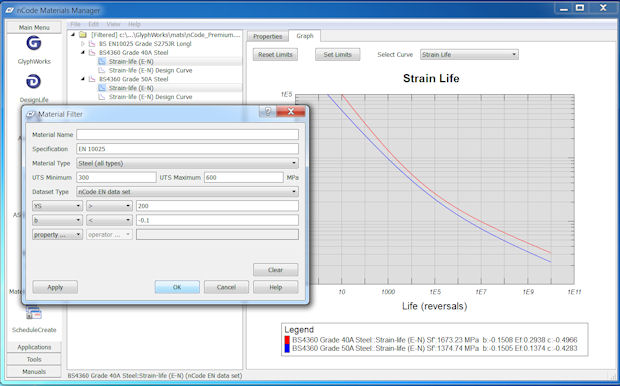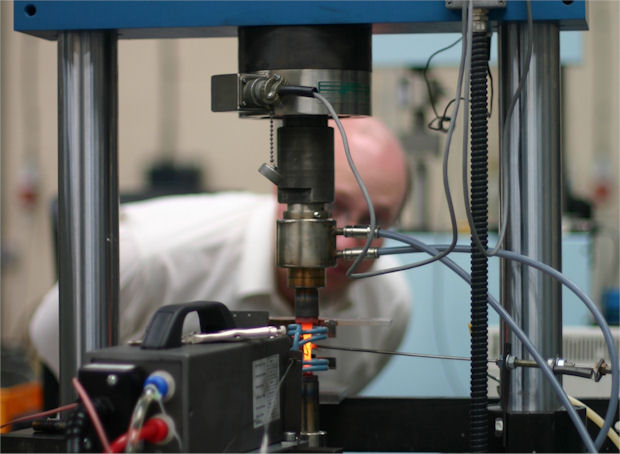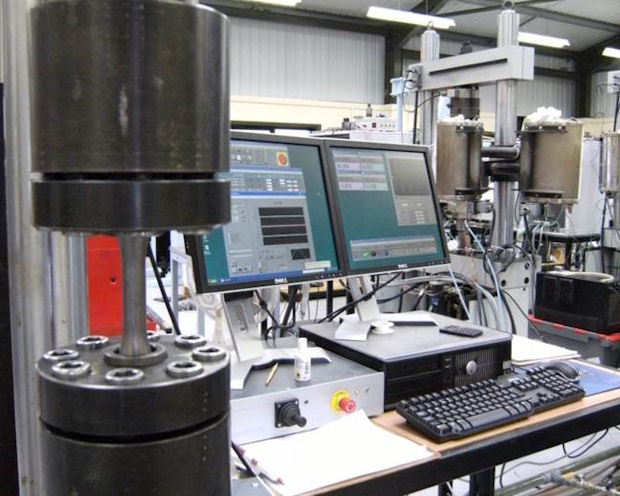Latest News
April 30, 2014
HBM-nCode has released the Premium Materials Database (PMD) for its nCode 10 suite of durability and data analysis software. The database provides a new collection of fatigue properties for commonly used steels and aluminum alloys. All the data in the database has been derived from tests performed at the ISO 9001-certified Advanced Materials Characterization & Test Facility (AMCT Facility) operated by HBM-nCode.
 The new Premium Materials Database for nCode 10 provides lab-tested datasets for fatigue analysis. Image courtesy of HBM-nCode.
The new Premium Materials Database for nCode 10 provides lab-tested datasets for fatigue analysis. Image courtesy of HBM-nCode.According to HBM-nCode, materials databases available on the Internet or for purchase provide basic static mechanical properties but typically do not include much data on fatigue. This limited data, adds the company, has often meant that engineering firms have commissioned their own materials tests to gather data on individually tested fatigue curves. The new Premium Materials Database, it says, provides engineers with reliable, high-quality fatigue parameters and helps avoid costly material tests.
The first release of the Premium Materials Database in nCode 10 provides data on 72 materials and is available to users exclusively through the nCode CDS (Complete Durability System) licensing methodology. nCode CDS, says the company, is a method for users to access nCode products including DesignLife for fatigue life prediction from finite element results, the GlyphWorks data processing system for engineering test data analysis, Automation Personal Edition for local analysis of engineering data and now the Premium Materials Database.
 HBM-nCode operates the ISO 9001-certified Advanced Materials Characterization & Test Facility. All the data in the new Premium Materials Database for nCode 10 has been derived from tests performed at the facility. Image courtesy of HBM-nCode.
HBM-nCode operates the ISO 9001-certified Advanced Materials Characterization & Test Facility. All the data in the new Premium Materials Database for nCode 10 has been derived from tests performed at the facility. Image courtesy of HBM-nCode.The nCode CDS licensing method uses a number of CDS units for each product option used. This provides users a flexible system that lets them run whatever product option they like in whatever combination required up to the available limit of CDS Units they have leased. This eliminates the need to determine the exact features needed or how many users will use them. It includes functionality for both physical test and virtual CAE, all through one integrated product suite.
HBM-nCode says that it plans on adding 20 to 30 materials to the database annually and that users will receive notifications automatically as new material data are introduced. To help users select required materials, the database identifies materials according to international standards such as ISO, DIN, WNR and UNS wherever possible. Statistical estimates of scatter are also provided to enable reliability and certainty of survival percentages to be assessed.
“We are particularly excited to utilize our state-of-the-art material testing capabilities for the creation of the Premium Materials Database,” said Steve Tudberry, vice president, HBM-nCode in a press statement. “nCode AMCT provides fatigue data and real-world validation critical to the success of advanced solvers for thermo-mechanical fatigue, welds, adhesive joints and composites. This close integration between innovative computer simulation methods, material characterization, and physical test validation is vital in the development of our world leading fatigue analysis software.”
 HBM-nCode’s Advanced Materials Characterization & Test Facility performs specialized testing projects for third-party clients such as racing teams, aircraft component manufacturers and automotive OEMs. Image courtesy of HBM-nCode.
HBM-nCode’s Advanced Materials Characterization & Test Facility performs specialized testing projects for third-party clients such as racing teams, aircraft component manufacturers and automotive OEMs. Image courtesy of HBM-nCode.According to HBM-nCode, the AMCT Facility also performs a number of specialized testing projects each year for external customers including racing teams, aircraft component manufacturers and automotive OEMs. All test equipment is calibrated to United Kingdom Accreditation Service (UKAS) standards by accredited bodies.
Existing nCode users can download the new version of the PMD from the support portal. The PMD for nCode 10 as well as the new capabilities available in nCode 10 are discussed in the on-demand webinar “Fatigue Curves & Material Datasets” (see below for a direct link) as well as in a series of upcoming and on-demand webinars.
For more information about the Premium Materials Database for nCode 10, visit HBM-nCode.
Download a technical brochure on the Premium Materials Database.
Go here for details on the Advanced Material Characterization & Test Facility.
Download a brochure on HBM-nCode’s materials testing services.
Click here to learn more about nCode CDS licensing.
Go here for an on-demand webinar “Fatigue Curves & Material Datasets.”
Sources: Press materials received from the company and additional information gleaned from the company’s website.
Subscribe to our FREE magazine, FREE email newsletters or both!
Latest News
About the Author
Anthony J. Lockwood is Digital Engineering’s founding editor. He is now retired. Contact him via [email protected].
Follow DE





